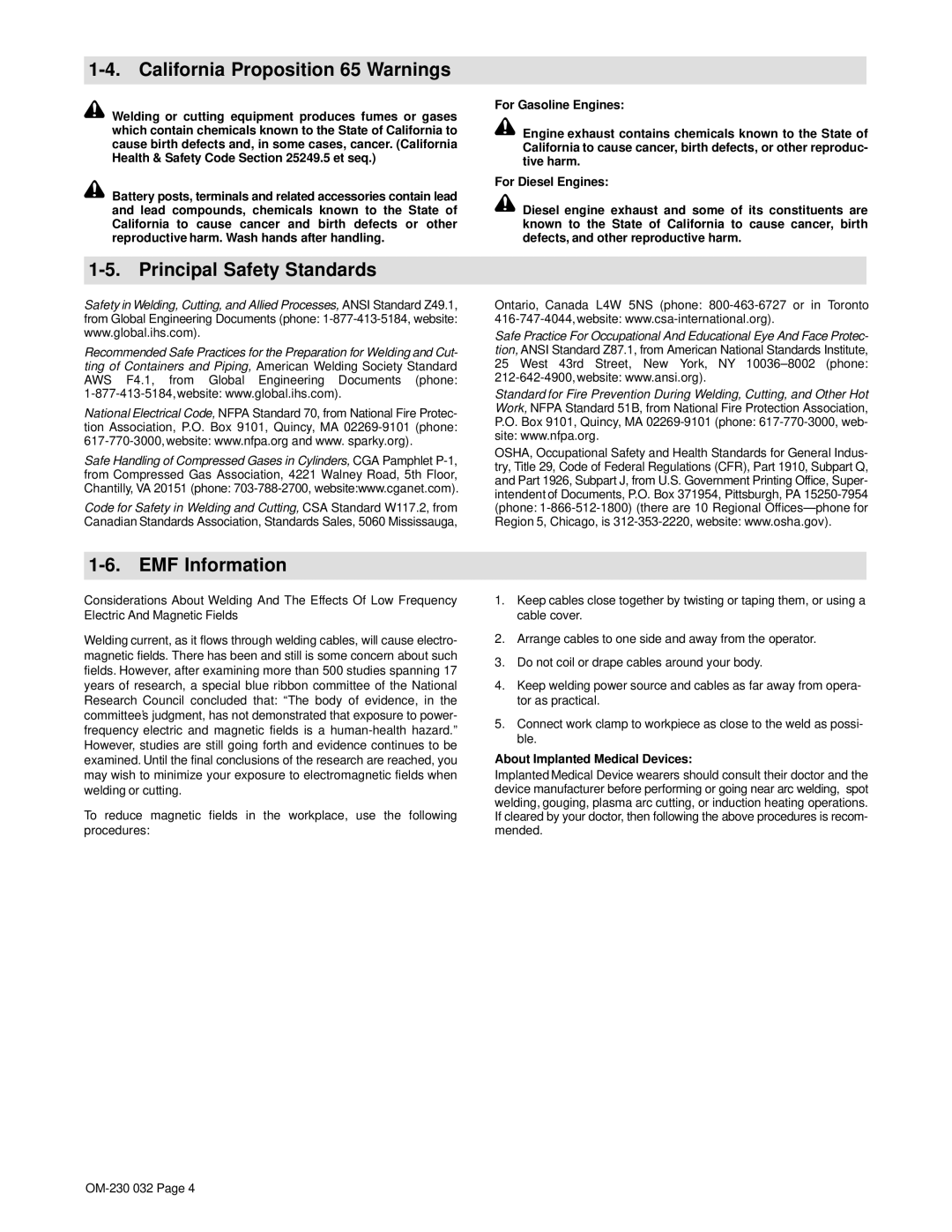Axcess 300 specifications
The Miller Electric Axcess 300 is a cutting-edge power source designed for advanced welding applications. This machine stands out in the marketplace for its unique combination of features, performance, and versatility. Ideal for industrial environments, the Axcess 300 is particularly well-suited for multi-process welding, allowing users to engage in MIG, TIG, and Stick welding with ease.One of the hallmark features of the Axcess 300 is its exceptional output capability. With a maximum output of 300 amps, this machine is equipped to handle a variety of welding tasks ranging from light to heavy fabrication. The machine can easily accommodate materials of varying thicknesses, making it an exceptional choice for diverse welding projects.
Incorporating Miller's advanced Auto-Set technology, the Axcess 300 simplifies the setup process for welders. With just a few inputs from the operator, the machine intelligently adjusts itself to provide optimal welding conditions, ensuring high-quality results without the need for extensive expertise. This feature is especially beneficial for less experienced welders, allowing them to produce excellent welds with minimal guidance.
The Axcess 300 employs Miller's innovative X-Mode technology, which helps to maintain a stable arc even when working with challenging materials or in fluctuating conditions. This enhances arc control, minimizing defects such as spatter and burn-through. Moreover, the machine's extensive voltage range allows for superior performance over different welding procedures, contributing to more efficient operation overall.
Enhanced portability is another important characteristic of the Axcess 300. Its compact design and lightweight construction make it easy to transport, allowing operators to quickly move the machine to different job sites. The durable enclosure protects against the rigors of industrial use, ensuring a long operational lifespan.
Safety features integrated into the Axcess 300 include a built-in thermal overload protection system, which prevents the machine from overheating during heavy usage. Furthermore, the intuitive interface with easy-to-read displays allows for straightforward operational controls, enabling welders to focus on their work without unnecessary distraction.
In summary, the Miller Electric Axcess 300 is a versatile, powerful, and user-friendly welding power source that combines advanced technology with practical features, making it an invaluable asset for professionals in various sectors.

